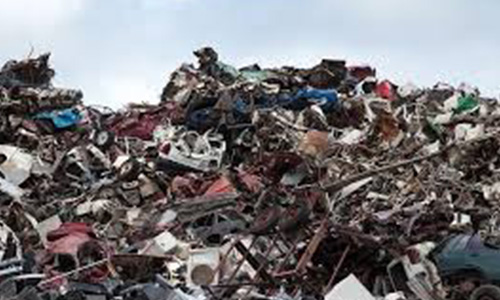
Electronic waste, or e-waste, is a rapidly growing environmental problem that impacts not only the environment but also landfills. It is defined as any electronic device that is no longer useful and has been discarded. This can include anything from smartphones and computers to televisions and refrigerators. E-waste is often made up of toxic materials, such as lead, cadmium, and mercury, which can have harmful effects on the environment and human health. Landfills are designed to contain waste materials, but the increase in e-waste has posed a significant challenge to these sites.
One of the main ways that e-waste impacts landfills is through the leaching of toxic materials. When e-waste is buried in landfills, rainwater can seep through the waste and pick up these toxic materials. Over time, these materials can contaminate the soil and groundwater, which can pose a serious health risk to nearby communities. Conversely, many electronic devices contain valuable metals such as gold, silver, and copper. When these devices are buried in landfills, these resources are lost forever. This not only represents a waste of resources but also contributes to the depletion of natural resources.
Furthermore, electronic waste takes up a lot of space in landfills. As more and more electronic devices are discarded, the amount of space needed to store these devices increases. This can lead to a shortage of space in landfills, which can force communities to build new landfills or expand existing ones. This can be costly and can have negative impacts on the environment and nearby communities.
To mitigate the impact of electronic waste on landfills, there are several steps that can be taken. One approach is to reduce the amount of e-waste that is produced. This can be done through initiatives such as product redesign, which can make electronic devices more durable and easier to repair. Zero Surge’s technology addresses this approach in 3 ways. (1) Manufacturers that use Zero Surge’s open chassis modules in their product designs increase the reliability and longevity of their products. (2) Electronics protected by Zero Surge products have increased longevity of 50% or more so those items last longer and don’t wind up in landfills prematurely. (3) Zero Surge products do not contain components that wear out or degrade so they don’t wind up in landfills like sacrificial MOV-based technology.
Another approach to mitigate the impact is to promote the reuse and recycling of electronic devices. There are many websites and apps that handle the sale and recycling of used electronics while some mobile phone companies and electronics retailers offer trade-in allowances. Also, purchasing refurbished items saves the consumer some money and helps keep electronics out of landfills.
Additionally, governments can implement policies and regulations that promote the proper disposal of electronic waste. This can include measures such as mandatory e-waste recycling programs, which require manufacturers to take back and recycle their products at the end of their life cycle. Such initiatives can help to ensure that e-waste is disposed of safely and responsibly, reducing the impact on landfills and the environment.
In conclusion, electronic waste is a growing environmental problem that poses a significant challenge to landfills. E-waste can contaminate soil and groundwater, contribute to the depletion of natural resources, and take up valuable space in landfills. To mitigate the impact of e-waste on landfills, it is important to reduce the amount of e-waste produced, promote the reuse and recycling of electronic devices, and implement policies and regulations that promote responsible e-waste disposal. By taking these steps, we can reduce the impact of e-waste on landfills and the environment, ensuring a more sustainable future

